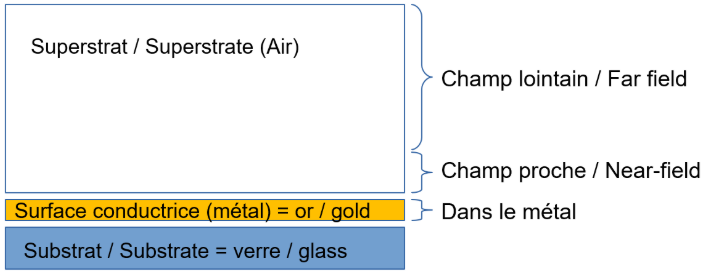Différences entre versions de « Substrate and Superstrate »
Sauter à la navigation
Sauter à la recherche
| Ligne 3 : | Ligne 3 : | ||
Material on which the ALU structure is laid. It is assumed to be infinitely thick. For DALHAI, it is defined by its refractive index (n1 in pyGDM), which is a number. Generally the substrate is made of glass, so n1=1.5. | Material on which the ALU structure is laid. It is assumed to be infinitely thick. For DALHAI, it is defined by its refractive index (n1 in pyGDM), which is a number. Generally the substrate is made of glass, so n1=1.5. | ||
| + | |||
| + | {| class="wikitable" | ||
| + | |+ | ||
| + | !A | ||
| + | !B | ||
| + | !C | ||
| + | !D | ||
| + | |- | ||
| + | |E | ||
| + | |F | ||
| + | |G | ||
| + | |H | ||
| + | |- | ||
| + | |I | ||
| + | |J | ||
| + | |K | ||
| + | |L | ||
| + | |- | ||
| + | | | ||
| + | | | ||
| + | | | ||
| + | | | ||
| + | |} | ||
= <font color="#D4650A">'''Superstrate'''</font> = | = <font color="#D4650A">'''Superstrate'''</font> = | ||
Version du 17 décembre 2021 à 11:05
Substrate
Material on which the ALU structure is laid. It is assumed to be infinitely thick. For DALHAI, it is defined by its refractive index (n1 in pyGDM), which is a number. Generally the substrate is made of glass, so n1=1.5.
| A | B | C | D |
|---|---|---|---|
| E | F | G | H |
| I | J | K | L |
Superstrate
Semi-infinite medium in which the substrate + plasmonic structure are immersed. For DALHAI, it is simply defined by its refractive index (n2 in pyGDM), which is a number. Generally, the superstrate is air, so n2=1.
